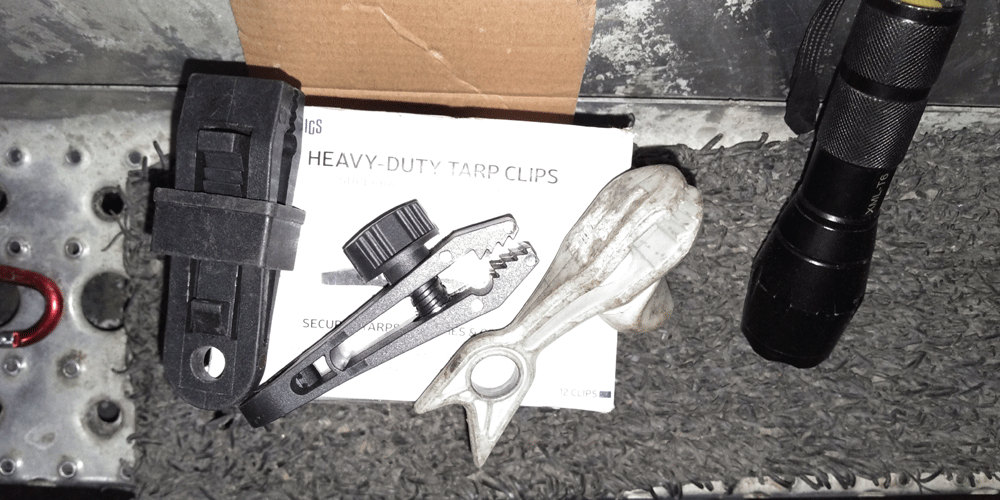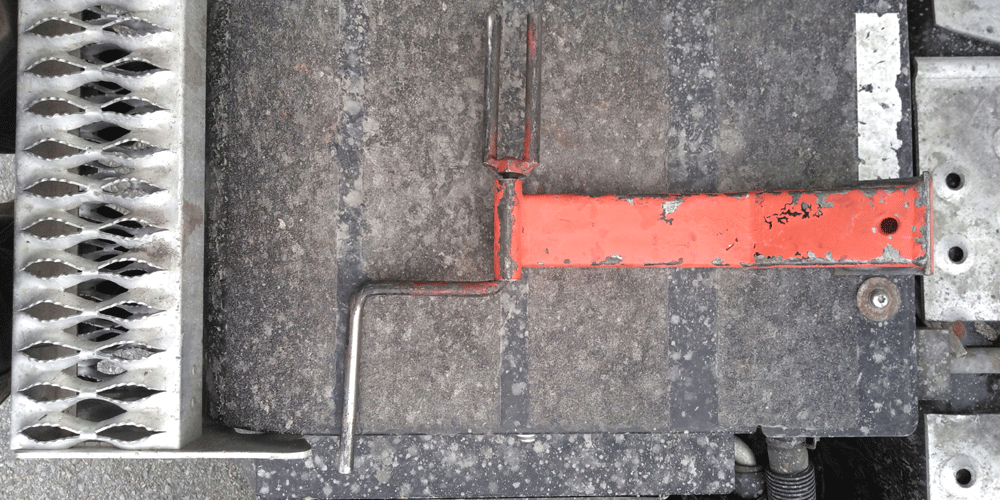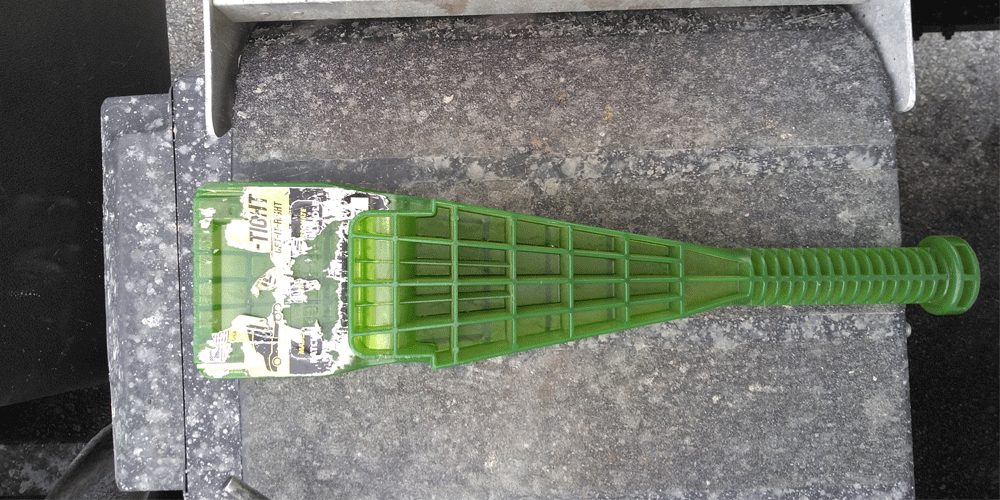/FOB2.png?width=960&height=540&name=FOB2.png) If you’re new to flatbed driving and securing your loads, it can be intimidating to get started.
If you’re new to flatbed driving and securing your loads, it can be intimidating to get started.
It can be a challenging, demanding job for even the best of us. If you don’t have the right tools to help you succeed, you can either be spending much more time than you need to be securing your loads or you might be doing harm to your body by doing it the wrong way.
Instead of making you learn the hard way after years of practice, I’m going to let you in on a few secrets. I’ll discuss the flatbed securement tools that you should add to your arsenal as soon as possible to help make your job a lot easier. I’ll teach you a few tricks along the way, too.
Improve Your Efficiency with Flatbed Securement Equipment
As a flatbed truck driver, it’s important that you work smarter, not harder. When you have extra tools to help you, you’ll not only save yourself time, you’ll save energy and avoid extra wear and tear on your body.
Being efficient is key. For instance, when you’re assessing the load and putting straps on, do your math ahead of time to figure out how many straps or chains you need rather than guessing how many you may need. Then get them all out at once instead of grabbing one strap at a time and going back and forth. You can run your time up as much as two hours by going back and forth like this.
When you’re removing the securements and tarp from your load, address each problem as you move from the front of your trailer to the back. Instead of undoing all your winches first and then removing all your bungees, do it as you go. You’ll save yourself time and steps to and from your headache rack.
As you move down the side of the trailer, undo your winches and your bungees as you encounter them. Hang them on the side of the trailer and move around the load. Then you can remove the tarp and take off the straps. Grab all the bungees in one trip to your headache rack and start rolling up your straps while the customer is unloading your freight.
Be sure you always ask the customer where you should be when they’re unloading the freight. Sometimes it can take customers a few hours to unload you. If you wait to put your tools away and roll up your straps once they’re done unloading, you’re wasting valuable time when you could’ve been working alongside them.
The smarter you work, the more money goes into your pocket. Think the process through before you start working and take care of problems as you go.
Top Tools to Help You Secure Your Flatbed Loads
These tools will help you secure your loads right the first time so that you can get on the road quickly and keep making money.
If you purchase all these tools at once, you can expect to spend a few hundred dollars. If you can spare that much, go right ahead and add these to your toolbox. Most of them can be picked up at Harbor Freight or a truck stop like TA, Love’s, Pilot, Petro and Flying J.
If you can’t afford them all at once, start slowly adding them to your arsenal.
To help give you a better idea as to which tools to buy first, here’s some information on what each tool is used for and how much they’ll cost you.
 Heavy-Duty Tarp Clips
Heavy-Duty Tarp Clips
Heavy-duty tarp clips are a cheap solution to make sure your tarps aren’t flying around when you’re driving down the road. They’re typically less than $1 per clip when you buy them in a set. Be sure you get Department of Transportation-legal (DOT) clips, or you could get a ticket. DOT-legal tarp clips screw in the middle.
Tarp clips are especially helpful when you have an odd-shaped load. Instead of having your tarps puff up in the wind, you can use the tarp clips to secure the tarp to the load. If your tarp is blowing around as you drive, you can get a ticket for obstructing motor operations. The cost of this ticket varies state by state.
Strap Winder
There are two types of strap winders you can use to wind up your straps much quicker than by hand. You’ll save yourself both some time and some fatigue.
You may spend as much as $35 on one of these, but they’re fairly easy to use. You put the ratchet in the strap winder and then you can easily and quickly wind up the strap. Instead of taking a couple of minutes to wind up each strap, you can spend 30 seconds winding it up.

Portable Winch
A four-inch portable winch tool can help you tighten your ratchet. Without this tool, you’d need to use your winch bar or pull it down by hand, and then you can’t get it as tight as you need it.
These can go for around $50 to $60 and you can find them at any truck stop.
Winch Bar
You may already have a three-foot winch bar, but it’s helpful to have an 18-inch winch bar and a 30-inch winch bar. These are especially great when you’re securing freight on a step deck or other low-profile trailer. They’ll run you about $20 each.
The smaller size makes them easier to use in tight spots. Instead of needing to push down on it at chest level to tighten your straps, you can step on the winch bar.

Paint Roller and Extension Pole
A paint roller with an eight-foot or 12-foot extension can help you when you’re trying to get straps on your load and you don’t have a ladder. You can use the tool to get straps pulled over the top of your freight.
You may spend upwards of $40 on this.
Ladder
There are a few types of ladders that you can use to make your job easier. A stepladder has an upside-down v-shape. A straight ladder looks like one-half of a stepladder and can be leaned against your trailer. A multi-position ladder moves into multiple configurations, making it the best option for flatbed drivers. It gets you where you need to go. Ladders are especially helpful when you’re tarping a load.
A multi-position ladder, depending on the brand, can cost you a couple of hundred dollars, but it’s a great investment.
A Tennis Ball and 40 Feet of Rope
It may sound weird that I’m telling you a tennis ball and rope can help you secure your loads, but it can make tarping a lot easier — especially when it’s windy. It’s also an inexpensive tool.
Punch a hole through the tennis ball and secure the rope through the ball with a knot and a washer. When it’s windy out, tie one end of the string to the tarp and then throw the tennis ball over your load. Then you can simply pull the tarp up and over.
When it’s windy, remember to roll your straps up backward. Put the running end with the hook on the outside so your strap has some weight when you’re trying to throw it over the load.
A bottle of windshield wiper fluid, oil or washer fluid can also help you when you’re tarping in the wind. These are things you should already have in your truck and they can help hold down the tarp as you secure it.
Remember: Don’t be a hero when you’re tarping in the wind. If conditions are poor, try to tarp your load in a covered area or wait until the wind dies down. That tarp is like a sail and it can take you for a ride if you get caught on it. There’s no load worth your life.
Extra Hand Tools
There are a few basic tools you should always keep with you. At a bare minimum, you should have two, 12-inch wrenches, a flat tip screwdriver, a #2 Phillips screwdriver, a ball-peen hammer, a claw hammer and a 2.5-pound sledgehammer.
These tools can be helpful in a variety of situations, from pulling out nails when the load is nailed to the trailer to getting ice off your rails during the winter.

Leather and Rubber Gloves
Have you ever thought about what kind of germs and materials are lurking on your straps and chains and the truck stop gas pumps? Gloves aren’t just for keeping your hands warm in the winter (though make sure you get insulated welders gloves to prevent your hands from getting cold), but they’ll also protect you from germs.
When you’re fueling up and putting fluids in your truck, wear rubber gloves. When you’re handling straps and chains, wear leather gloves.
If you touch your eyes or another body part after touching something barehanded, you could have problems. Not only can you be spreading germs, but you can be spreading harmful contaminants throughout your truck and onto your loved ones riding with you or that you’re visiting.
This is a good reminder to make sure you regularly wash your hands.
Dry Erase Markers
Dry-erase markers are a cheap tool that can be a big help. You can write your directions on the windshield and wipe off each turn or direction as you complete it. This way, you won’t be a sitting duck on the side of the road looking up directions and you won’t need to distract yourself by repeatedly looking at your permit while driving.
A Set of Clothes for Every Season
Clothes are as much a tool as everything I’ve mentioned thus far. You should keep at least one set of clothing for each season in your truck year-round. When you’re driving over-the-road, you can encounter every season in just one week.
It could be freezing in Minnesota one day but scorching in Texas the next. I’ve seen snow in the Colorado Rockies even in July. When you’re only thinking about how cold (or hot) you are when you’re up on your trailer securing a load, you’re distracted and you’re not thinking about the task at hand.
Advance Your Skills and Move Larger Freight
Remember, you don’t have to get all of these tools at once. Just a few cheap, easy tools can help you succeed, like heavy-duty tarp clips. Slowly invest in these tools as you have the money to do so.
If you’re looking for a few other ways to save time and money, invest in a portable stove, or a lunch box stove oven, to save money by cooking in your truck. A CB radio can give you traffic reports and help you get out of a bad traffic area. As you get the hang of flatbed driving and securing your loads, you can start advancing your career to haul larger, heavier, more specialized freight